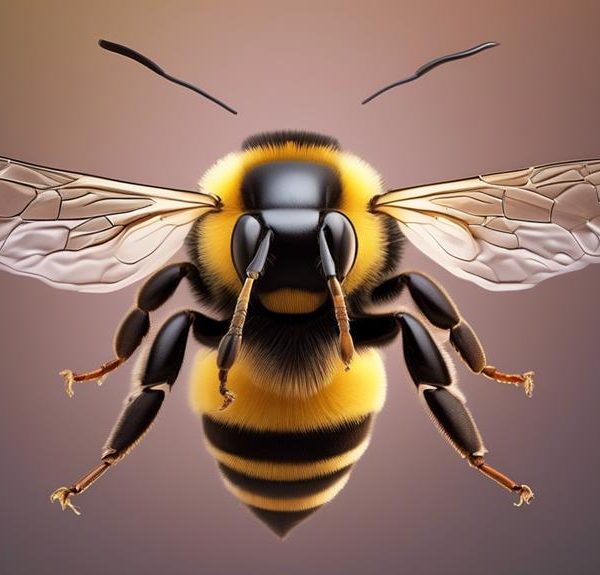Bursting the bubble on cactus myths, delve deeper to discover whether these resilient desert plants actually house sweet, nourishing honey.
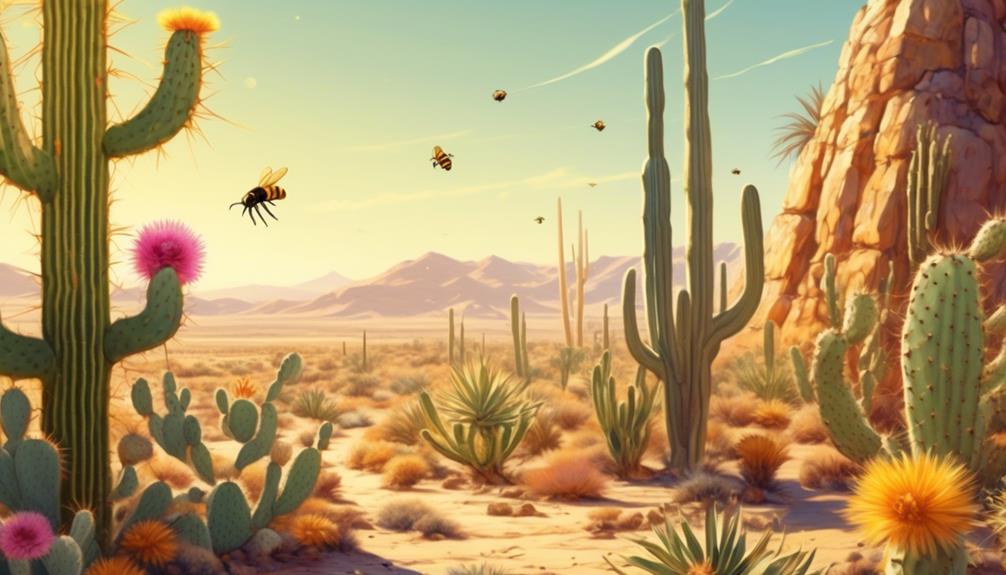
Are Cactuses Filled With Honey
In the harsh, dry desert, cactuses stand tall and resilient, a beacon of life amid barren sands, provoking the question: are these prickly plants filled with sweet, nourishing honey?
You may have heard tales of travelers surviving by drinking from cactuses, and it's easy to imagine these survival stories morphing into myths of honey-filled flora.
While it's true that some cactuses hold moisture, the idea of them brimming with honey warrants a closer look. So, let's dissect this intriguing assumption, shall we?
As we journey together, you'll uncover the truth behind cactus anatomy, dispelling popular misconceptions and deepening your appreciation for these desert dwellers.
Key Takeaways
- Cactuses do not contain honey; they store water in their thick, waxy skin and stem.
- Cactus juice is a survival liquid, not sweet nectar like honey, and can cause digestive issues if consumed raw.
- Cactus sap is mildly sweet but not comparable to honey, which is rich in fructose and glucose with unique properties.
- Understanding cactuses' adaptations and survival mechanisms dispels misconceptions about them containing honey and highlights their ecological importance in providing habitats and food.
Understanding Cactus Anatomy
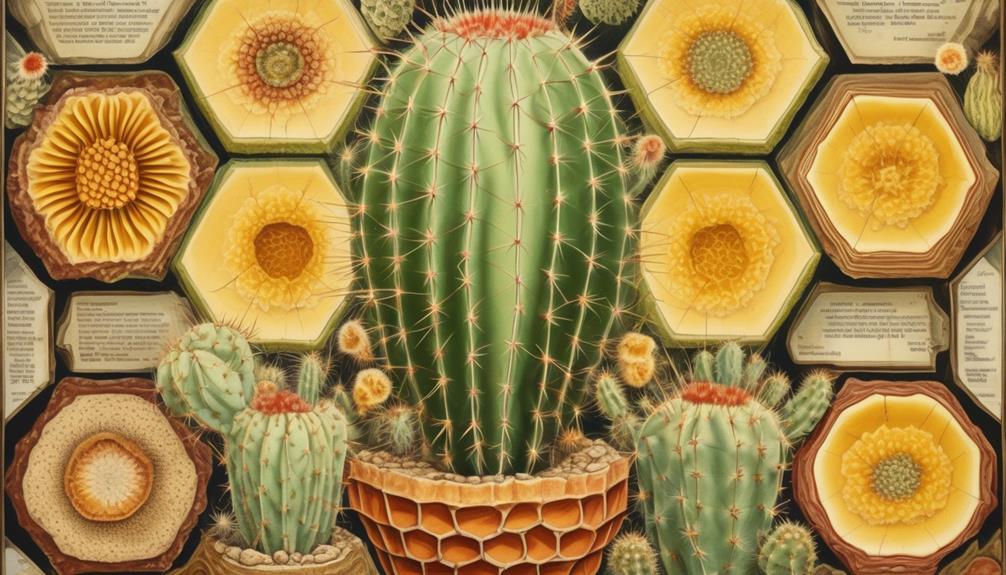
To truly grasp why cactuses aren't filled with honey, you'll need to delve into the unique anatomy of these fascinating desert dwellers. What you'll find is a system designed not for the production of sweet nectar but for the harsh realities of arid environments.
Firstly, you'll notice the cactus' thick, waxy skin. This is a crucial barrier against water loss. The cactus stores its precious water reserves in the stem, not in the form of honey. The stem, swollen and fleshy, is filled with a gel-like mucilage that retains water, not a sugary syrup.
Secondly, you'll discover the absence of leaves. Instead, you'll find spines, which are modified leaves. These fend off thirsty animals and provide shade, reducing water evaporation. They aren't conduits for honey production.
Finally, you'll examine the cactus flower, the only part of a cactus that produces nectar. However, this nectar isn't honey. Rather, it's a sweet liquid designed to attract pollinators, such as bees, which in turn produce honey in their hives.
In essence, the cactus presents a masterclass in desert survival, not sweetness. The honey you're thinking of comes from bees, not cactuses.
The Truth Behind Cactus Juice
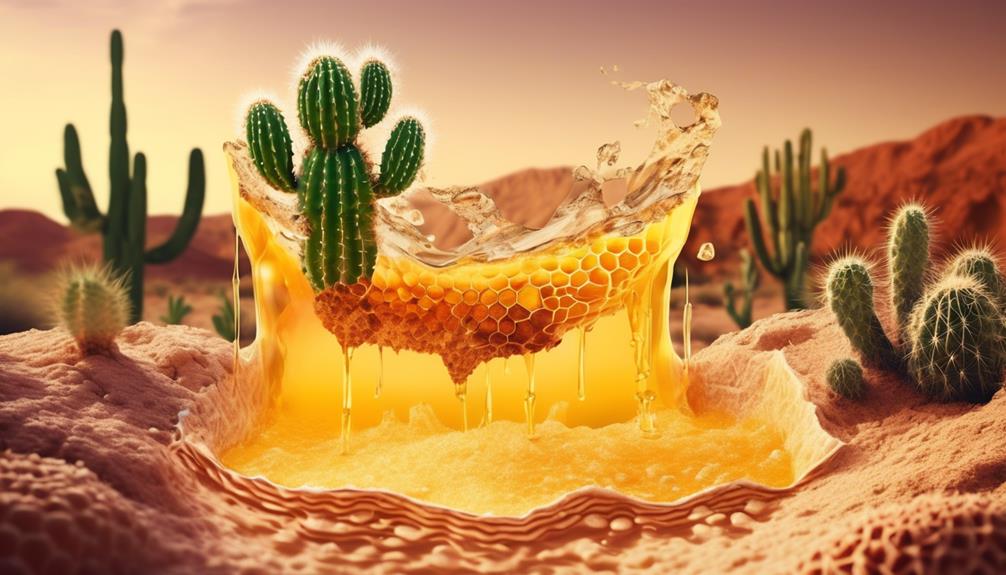
Dispelling the myths surrounding cactus juice, it's vital you understand this liquid isn't a sweet nectar but rather a survival mechanism for the plant in arid conditions. Just like camels store water in their bodies, cactuses do too. They store water in the form of a clear, sticky, viscous substance that you might mistake for honey or nectar.
What you're seeing isn't a sugary treat; it's a lifeline. When water is scarce, the cactus uses its stored liquid to survive. This substance is replete with nutrients, enabling the plant to endure harsh conditions. However, this doesn't mean you can drain a cactus and expect a refreshing drink.
The liquid inside a cactus is alkaline and can cause diarrhea if consumed raw. It's not honey, nor is it a safe, drinkable water substitute. When processed correctly, however, it can be made into a drink known as 'cactus water.' The process involves boiling and filtering out harmful compounds.
Therefore, the myth of cactuses filled with honey is just that – a myth. The truth behind cactus juice is a story of survival, adaptation, and the remarkable resilience of nature.
Cactuses and Their Survival Mechanisms
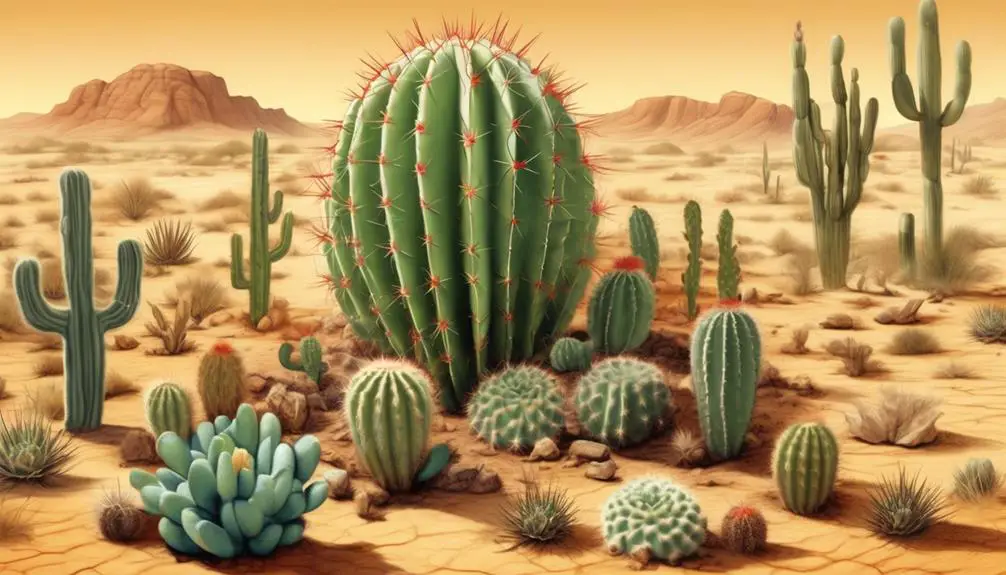
Now that we've debunked the honey-filled cactus myth, let's examine the advanced survival mechanisms that allow these hardy plants to thrive in some of the harshest climates on Earth. Cactuses, or cacti, have developed unique features that help them survive in arid and semi-arid environments.
Feature | Function |
|---|---|
Thick, waxy skin | Reduces water loss and protects from harsh sunlight |
Spines | Acts as a shield against animals and provides shade to the cactus |
Shallow roots | Spreads out to quickly absorb any available water |
Deep tap root | Penetrates deep into the soil to find water during drought |
You see, cacti's thick and waxy skin reduces water loss, while their spines not only act as a protective shield against predators but also provide shade to the plant body, reducing water evaporation. Their root system, with shallow roots that spread out widely, enables them to quickly absorb any available water, while a deep tap root can tap into water sources deep underground during times of drought.
These survival mechanisms are a testament to the resilience of cacti, demonstrating their remarkable adaptation to their environment. Now, isn't that sweeter than any myth?
Comparing Cactus Sap and Honey
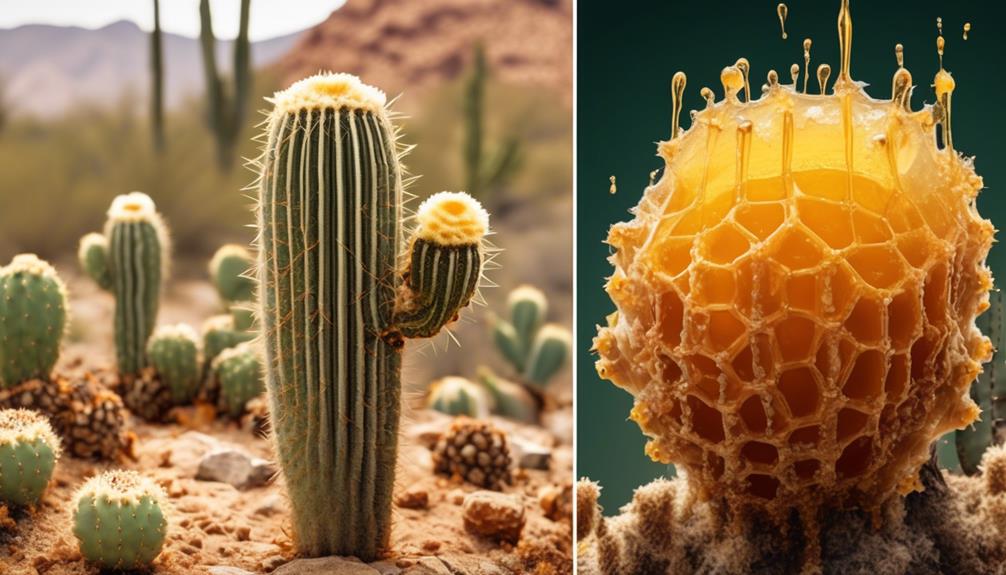
Let's dive into a detailed comparison between cactus sap and honey, two substances often mistaken for each other due to prevalent myths and misconceptions.
You might've heard that cacti are filled with honey, but that's not quite accurate. The liquid inside a cactus is primarily water stored for survival in arid environments. This sap is a viscous fluid that's mildly sweet due to the presence of certain sugars, but it's far from being as sweet as honey.
On the other hand, honey is a product of bees, made from the nectar of flowering plants. It's rich in fructose and glucose, which gives it a much sweeter taste than cactus sap. Honey's texture is also thicker and more consistent, while cactus sap can vary depending on the specific variety of cactus and its water content.
Chemically, both substances are different too. Honey contains enzymes and antioxidants not found in cactus sap. The sap, however, contains mucilage, a type of fiber not present in honey. Both have benefits, but they're distinct substances with different properties and uses. So, while the myth is intriguing, it's clear that cacti aren't filled with honey.
Common Misconceptions About Cactuses

You might be surprised to learn how many misconceptions surround cactuses, from their internal composition to their care requirements and ecological roles. Many people believe that cactuses are filled with honey or water, but this isn't accurate. The internal makeup of a cactus is primarily a dense, water-storing tissue that aids in their survival in arid climates.
Another common misconception is that cactuses don't need much care. While they're certainly resilient, they still need specific conditions to thrive, including plenty of sunlight, the right soil composition, and careful watering.
The ecological role of cactuses is often underestimated too. They aren't just desert decorations; they provide essential habitats and food sources for many creatures.
To summarize, here's a table debunking some myths:
Misconception | Fact | Implication |
|---|---|---|
Filled with honey/water | Dense, water-storing tissue | Cactuses are adapted for arid environments |
Don't need much care | Need specific conditions to thrive | Care requirements vary |
Serve no ecological purpose | Provide habitats & food for creatures | Essential part of ecosystem |
Your understanding of cactuses will be much richer when you disregard these misconceptions.
Conclusion
No, cactuses aren't filled with honey. They hold a sap that aids survival in arid conditions, not honey.
This sap, often called 'cactus juice,' isn't as sweet as honey and has different properties.
While some might mistake it for honey due to its sticky texture, it's crucial to recognize the difference.
The myth of cactuses filled with honey is just that – a misconception fueled by misunderstandings about cactus anatomy and survival mechanisms.

